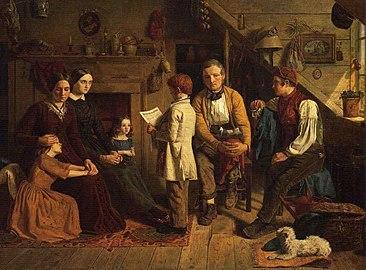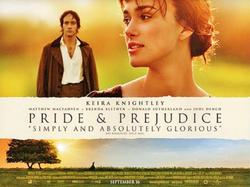In the realm of classic literature, few works have been as enduringly influential as Jane Austen‘s “Pride and Prejudice.” This novel, first published in 1813, offers a rich tapestry of social commentary woven through the personal narratives of its characters. At its core, “Pride and Prejudice” is a reflection of the societal norms and expectations of early 19th-century England, particularly concerning gender roles. This article seeks to delve into the intricate dynamics of these gender roles as portrayed in Austen’s work, examining how they shape the interactions and development of key characters. By analyzing the societal constructs that dictate behavior and opportunities based on gender, we aim to uncover the nuanced critique embedded within Austen’s narrative. Through this exploration, we will better understand how “Pride and Prejudice” not only mirrors the gender expectations of its time but also challenges and subverts them, offering insights that continue to resonate with contemporary audiences.
Exploring the Influence of 19th Century Social Norms on Gender Roles
The 19th century was a period marked by stringent social norms, which heavily influenced gender roles and expectations. In Pride and Prejudice, Jane Austen masterfully illustrates the impact of these norms through her characters and their interactions. Women were expected to prioritize marriage and domesticity, as societal success was often measured by a woman’s ability to secure a favorable match. This is evident in the character of Mrs. Bennet, whose primary concern is to see her daughters married well. Meanwhile, men were seen as the providers and protectors, with Mr. Darcy and Mr. Bingley embodying the societal ideals of wealth and status. Such dynamics underscore the constraints placed on both genders, where personal desires were often suppressed to meet societal expectations.
- Marriage as a Social Contract: The pressure on women to marry well is a recurring theme. The novel highlights how marriage is not just a personal choice but a social obligation.
- Economic Dependence: Women were economically dependent on their male relatives, reinforcing the notion of male dominance.
- Social Mobility: Marriage offered one of the few avenues for women to improve their social standing, which is portrayed through Charlotte Lucas’s pragmatic approach to marrying Mr. Collins.
Austen’s portrayal of these gender roles serves as both a reflection and a critique of the era’s social norms. By exposing the limitations and inequalities inherent in these roles, Austen invites readers to question and analyze the societal structures of her time.
Character Analysis: Gender Expectations and Personal Agency in Austens Narrative
In Pride and Prejudice, Jane Austen intricately weaves gender expectations with the theme of personal agency, offering a nuanced critique of early 19th-century societal norms. The novel’s protagonist, Elizabeth Bennet, stands as a testament to a woman’s potential for independence and assertiveness within a rigid social structure. Her character challenges the traditional gender roles of her time, as she exhibits traits of wit, intelligence, and decisiveness, which are typically associated with male characters in literature of that era. Elizabeth’s rejection of Mr. Collins’s proposal is a bold assertion of her autonomy, defying the expectation that women should prioritize financial security over personal happiness.
The contrasting characters of Charlotte Lucas and Mr. Darcy further illuminate the tension between societal expectations and personal desires. Charlotte’s pragmatic acceptance of Mr. Collins highlights the limited options available to women, while Darcy’s transformation underscores the influence of personal growth over societal pressures. Austen uses these characters to explore the complex interplay between gender roles and personal agency, presenting a society where choices are often constrained by class and gender but still allowing for moments of individual empowerment. The narrative thus encourages readers to question the rigidity of social conventions and consider the potential for change within established structures.

The Intersection of Class and Gender: A Critical Examination
Jane Austen’s Pride and Prejudice offers a profound exploration of how class and gender intersect to shape societal roles and individual destinies. The novel intricately weaves these themes through its characters, particularly focusing on the limitations imposed on women by both their gender and social standing. Elizabeth Bennet, the protagonist, serves as a vessel to critique the rigid expectations of women in her time. She is portrayed as intelligent and independent, yet she must navigate a society where marriage is often the only avenue for social mobility and economic security. Despite her wit and strength, Elizabeth is constantly reminded of her “inferior” status due to her family’s lack of wealth and connections.
- Marriage as a social contract: The pressure on women to marry well is a recurring theme, reflecting the limited opportunities available to them.
- Inheritance laws: The Bennet sisters’ precarious future due to the entailment of their father’s estate highlights the intersection of class and gender-based disadvantages.
- Character dynamics: Characters like Lady Catherine de Bourgh exemplify the power wielded by wealthier women, albeit still confined within patriarchal structures.
Austen’s portrayal of these dynamics not only critiques the societal norms of her time but also invites readers to reflect on the ongoing implications of class and gender in shaping individual lives. By examining the constraints faced by her characters, Austen opens a dialogue on the necessity of social reform and the redefinition of gender roles.

Recommendations for Modern Interpretations of Gender Roles in Classic Literature
In reimagining gender roles within Jane Austen’s “Pride and Prejudice,” one can explore the nuanced dynamics of the characters through a modern lens. By shifting focus from the traditional interpretations, we can gain fresh insights into the societal constructs of the era and their relevance today. Consider the following recommendations for a contemporary analysis:
- Elizabeth Bennet as a Proto-Feminist: Highlight Elizabeth’s wit and independence as qualities that challenge the patriarchal norms of her time, positioning her as a precursor to modern feminist ideals.
- Mr. Darcy’s Vulnerability: Examine Mr. Darcy’s character development as a journey towards emotional openness, breaking away from the stoic masculinity expected in the 19th century.
- Societal Expectations and Marriage: Analyze how marriage is portrayed not just as a social necessity but as a personal choice, providing a commentary on the evolving perceptions of marital roles.
These interpretations encourage readers to question and redefine the gender norms depicted in Austen’s work, inviting a dialogue on the progress and persistence of these themes in contemporary society.
